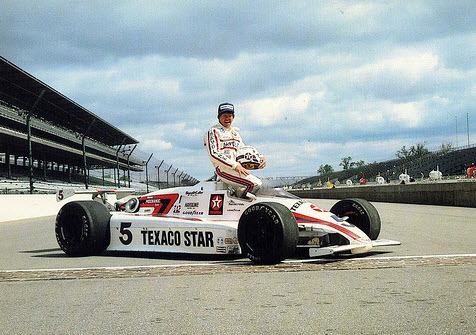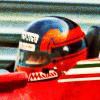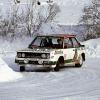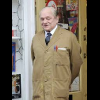I have just seen this sad news on the Internet.
https://www.oxfordma...d-dies-aged-80/
Robin Herd RIP
#1

Posted 06 June 2019 - 16:51
#3

Posted 06 June 2019 - 17:38
Thanks for your life's work, Robin. :-(
#4

Posted 06 June 2019 - 17:39
Sad news. Condolences to all who knew him. An incredibly talented man
#5

Posted 06 June 2019 - 18:42
oh, that's sad.
I knew him slightly from rallying when he took up the sport as a hobby. He was always friendly and approachable.
He had a Mk 2 Escort but his instincts took over and it soon sprouted a unique rear spoiler. Later he bought a Darrian T9 to go tarmac stage rallying and put it into the wind tunnel to the great interest of the designer/builder Tim Duffee, who soon incorporated the improvements into his later models. Robin's rally cars were turned out in Leyton House blue - i guess they had some left over!
#7

Posted 06 June 2019 - 22:49
Oh no.
x2
'Wrong time and place but, was Mssr Herd involved with the March GTPs?
Edited by jimclark, 06 June 2019 - 23:05.
#8

Posted 07 June 2019 - 07:10
RIP Robin.
#9

Posted 07 June 2019 - 10:25
RIP, Robin.
I'm afraid that the Cosworth 4wd F1 car deserves a mention on the "Painfully, Awfully, Ugly" thread, but the gorgeous McLaren M2B makes up for it.
#10

Posted 07 June 2019 - 10:54
Truly a motor racing great! The March story alone is testament to the fact that the world of auto racing would have been so much poorer without this colourful enthusiast. And above all, a wonderful human being by all accounts, with all the necessary goods and evils that make a man stand out from the crowd. You can't really miss a guy like Robin, because without him, you don't even know what you are missing!
RIP, Mr. Herd ![]()
#11

Posted 07 June 2019 - 14:35
Very sad - R.I.P.
#12

Posted 07 June 2019 - 14:45
#13

Posted 07 June 2019 - 15:23
RIP, Robin.
I'm afraid that the Cosworth 4wd F1 car deserves a mention on the "Painfully, Awfully, Ugly" thread, but the gorgeous McLaren M2B makes up for it.
So do the Indy 500 winners 1983-'87....




But not so much the GTPs (again, does anyone know if Robin had a hand in them?)




Edited by jimclark, 07 June 2019 - 18:07.
#14

Posted 07 June 2019 - 15:40
Very, very sad. This from the BRDC...
It is with great regret that we have to inform Members of the death of Associate Member Robin Herd CBE who passed away on Tuesday after a prolonged battle with cancer.
After turning down the opportunity of playing cricket for Worcestershire, a scholarship took Robin to St Peter’s College, Oxford from where he graduated in 1961 with a double first in physics and engineering. He joined the Royal Aircraft Establishment at Farnborough where he was one of the designers involved in the creation of Concorde. In 1965 he was alerted by school friend Alan Rees to an engineering vacancy with Bruce McLaren’s fledgling Formula 1 team which set him on the path of racing car design for the next three decades. At McLaren he used his aerospace experience to design the McLaren M2A and F1 M2B single-seaters using the Mallite plywood and aluminium material. For engine-related reasons the M2B was not a success whilst although its successor, the BRM V12-powered M5A, had its moments in the sun, it was the Cosworth DFV-powered M7A which really established McLaren as a leading Formula 1 team, the car winning on its debut the 1968 Race of Champions at Brands Hatch in Bruce McLaren’s hands. Although Robin was involved in the early design work of the M7A, it was left to Gordon Coppuck to develop it as Robin moved to Cosworth to design a four wheel drive F1 car which in the event never started a race.
Next to knock on Robin’s door was Team Lotus driver Jochen Rindt who was looking to set up his own ‘super team’ with the encouragement of his manager, Bernie Ecclestone. However, Robin preferred to throw in his lot with F2 driver Max Mosley’s plans to create not just a Formula 1 team but a company manufacturing racing cars for all the main categories. Thus was born March, the name an acronym of Mosley, Alan Rees, Graham Coaker and Robin Herd, each of whom chipped in £2500. The Herd-designed prototype F3 March 693 first raced at Cadwell Park in September 1969. Incredibly at the beginning of March 1970 there were five March 701s on the grid for the opening round of the F1 World Championship at Kyalami with Jackie Stewart in Ken Tyrrell’s car on pole position and Chris Amon’s works car alongside. Jackie finished the race in third place and then went on to win the next round of the World Championship at Jarama, the last victory for a privateer team in a World Championship F1 race.
Whereas the March 701 was a somewhat conventional design given the limited time available, the 1971 711, with its bullet-nose beneath a tea tray-shaped horizontal front wing was rather more radical. In the works car, Ronnie Peterson, in his first full season in Formula 1, finished second in the World Championship, to Jackie Stewart in the first Tyrrell design, without winning a race. Ronnie did win several F2 races in a 712M on the way to taking the European F2 title. The 721, which introduced Niki Lauda to Formula 1 as team mate to Ronnie, was not a success but the F2-based 731 did rather better, particularly Lord Hesketh’s version in the hands of James Hunt. After the 1970 victories courtesy of Jackie Stewart, there were only two more – Vittorio Brambilla winning the rain-shortened Austrian Grand Prix in 1975 and Ronnie Peterson a slipstreaming epic at Monza a year later.
If F2 was a struggle, March cars designed by Robin continued to flourish in Formula 2, the European Championship being won by Jean-Pierre Jarier (1973), Patrick Depailler (1974), Bruno Giacomelli (1978), Marc Surer (1979) and Corrado Fabi (1982). When Formula 3000 replaced F2 in 1985, March provided the championship-winning car for the first three seasons – Christian Danner (1985), Ivan Capelli (1986) and Stefano Modena (1987). At the end of 1977 Robin had bought out Max Mosley’s shareholding in March and effectively became sole owner of the company. After a three year sabbatical, March returned to F1 in 1981 with Guinness backing but no notable success. There would be one final F1 venture with Japanese Leyton House backing in 1987 to ’89, the Judd-engined 881 proving to be one of the most competitive non-turbo cars in the hands of Ivan Capelli and Mauricio Gugelmin.
Although production of low-margin F3 cars fell away in the early ‘80s, Robin developed more profitable work in Indy Car and IMSA sports car racing in the USA. A March won the Indy 500 five years in a row – 1983 (Tom Sneva), 1984 (Rick Mears), 1985 (Danny Sullivan), 1986 (Bobby Rahal) and Al Unser (1987) although the 83C had been the last of Robin’s designs, the later cars being designed by Adrian Newey. With the overwhelming export success in the USA, Robin was awarded a CBE in 1986 for services to the British motor sport industry and the following year took the decision to float March on the Unlisted Securities Market. However, although the flotation went well, the final F1 venture was insufficiently viable and Robin sold out to Leyton House. He set up a design office in Bicester and pursued another of his sporting interests by acquiring Oxford United FC.
The BRDC extends its most sincere condolences to Robin’s son Mark and to his family and friends.
© British Racing Drivers' Club
A grim week.
DCN
Edited by Doug Nye, 07 June 2019 - 15:45.
#15

Posted 07 June 2019 - 15:52
This is very sad news. I think I've told this story before, but I'll never forget the time ('71) when he came up to the tower at Mosport to be interviewed over the public address system by my dad. He put one foot up on the bench as he spoke - which revealed that the crotch of his trousers were being held together by a generous strip of duct tape! Were that to happen today, it would cause a corporate scandal in the team's boardroom. Back then, it just summed up what an utterly down-to-earth and unpretentious person he was.
#16

Posted 07 June 2019 - 16:03




















